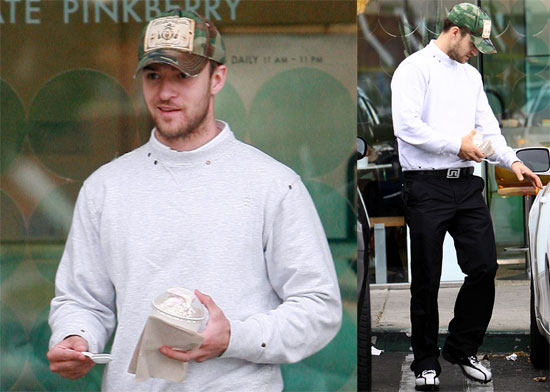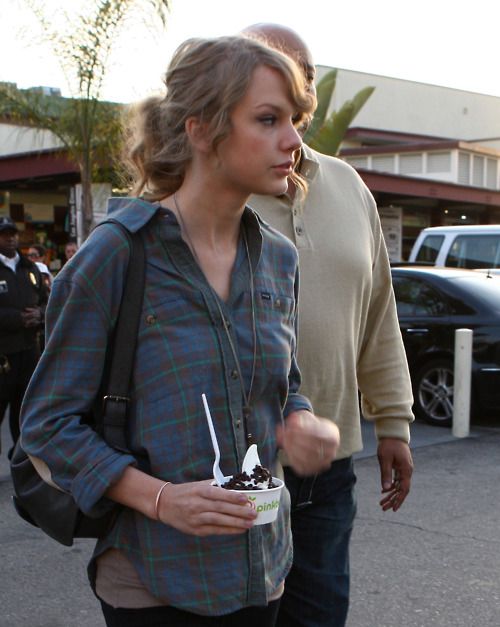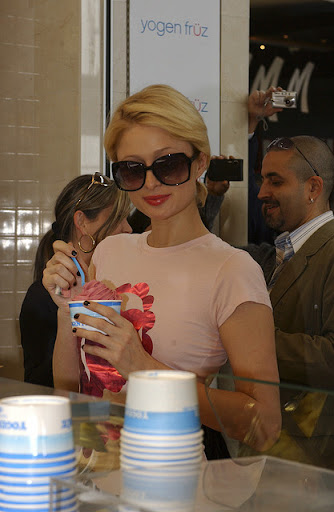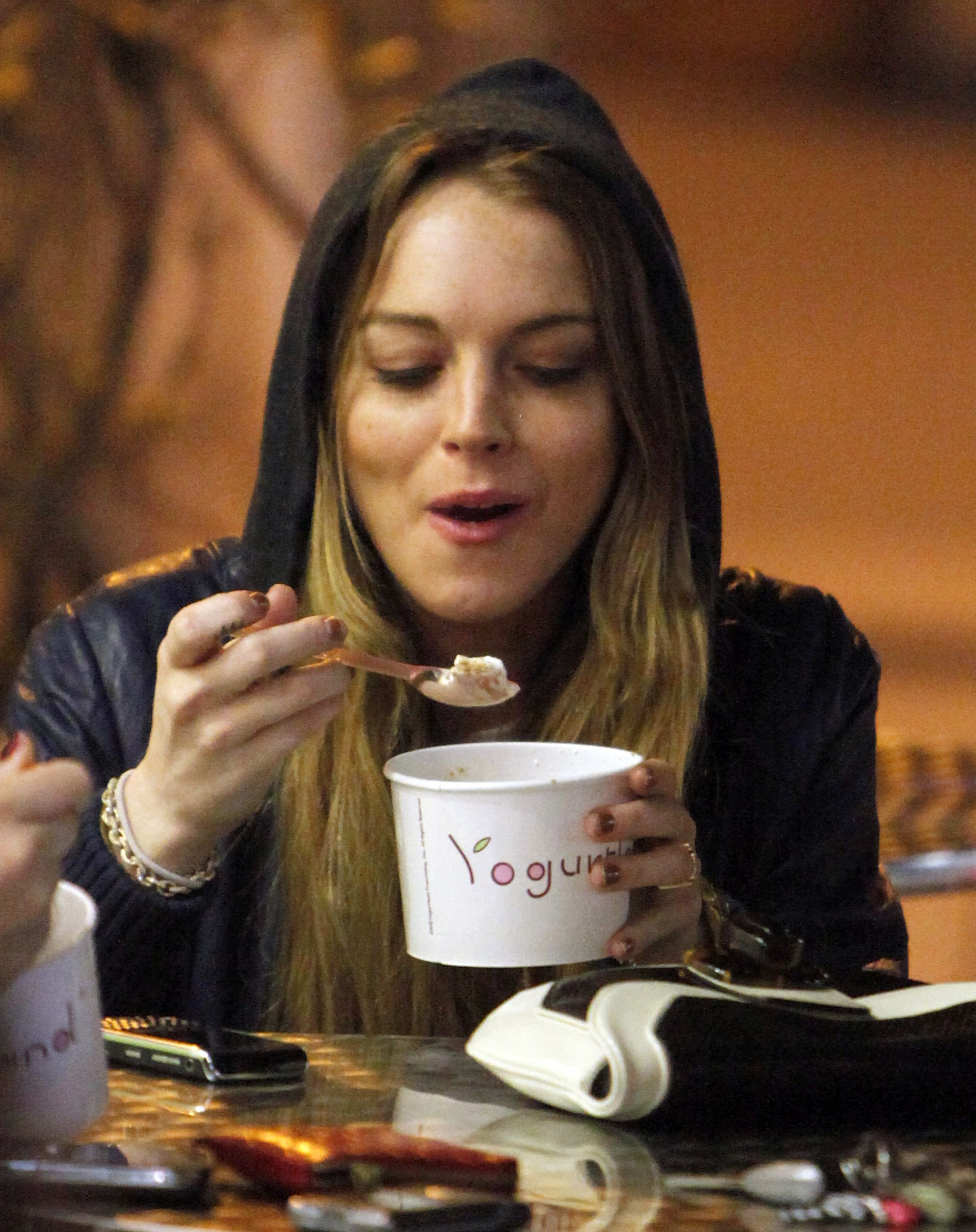︎︎︎episode 56
Cultured Content: The Fro-11 on Fro-Yo, Food Trends through the Years and Rich White Guys with Dumb Opinions
Sept 21st, 2021
︎︎︎︎ Listen on Apple
︎︎︎︎ Listen of Spotify
︎︎︎︎ Listen on Stitcher

Before we jump into the more “wellness” or “healthy” food trends...I wanted to touch on another timeless trend: being a rich white dude with a super dumb (but loud) opinion. Today’s example ties into our “that girl” trend episodes because it the rich white dude with a dumb/loud opinion is Jonathan Neman, co-founder and CEO of Sweetgreen.
I have to quote the Eater article by Hillary Dixler Canavan about this because it comes in hot and I just love it. The title is “Salad CEO Bravely Proposes Salad as Solution to Relentless Global Pandemic:”
“Shutting up is literally free, but then again, so is posting on LinkedIn, where Jonathan Neman, co-founder and CEO of Sweetgreen, recently published a post — which he then took down after Vice pointed it out — essentially blaming fat people for the ravages of the pandemic and calling on the government to create a ‘health mandate.’”
I’m not going to go too deep into what he said, because it’s the standard tone deaf, classist, fatphobic nonsense. And his logic (if we can call it that) relies pretty heavily on the BMI, which science has proven is flawed and racist. But his overall argument is that rather than focusing on vaccinations and masking, we should focus on diet, by taxing processed and sugary foods to cover the cost of the pandemic. This is especially ridiculous coming from a guy who made a fortune slinging $15 salads, predominantly on the backs of BIPOC workers.
But as I mentioned, “rich white guys with a loud dumb opinion” is a trend that never dies (even if it’s never a good look), and another example I have is Whole Foods CEO John Mackey. This guy has been banging a dumb drum for so long, that back in 2009 he wrote an op-ed for the Wall Street Journal called “The Whole Foods Alternative to Obamacare.” And surprise, surprise, Mackey thinks the true secret to health and wellness is diet. He likes to espouse that a “better” diet (supposedly purchased at your local Whole Foods) will prevent the need for a healthcare system and medication, never mind that tons of health issues are caused by genetics and our environment. Never mind that fresh fruits and vegetables are a luxury item for many Americans.
In 2010, Whole Foods began to offer “graduated” employee discounts based on body mass index, blood pressure, cholesterol, and nicotine use. Basically the “healthier” (and I use that term in quotes) a worker was, the bigger the employee discount...which defies all logic because if you’re operating under the logic that access to healthier foods results in better health, wouldn’t it make sense to offer a deeper discount to the “less healthy” workers? It’s all a gross, hot mess.
Before we jump into the world of frozen yogurt, I thought we could reminisce for a moment about some other trendy foods of yesteryear:
This century:
- Acai bowls
- “Superfoods”
- Spirulina
- Spiralized vegetables
- Kombucha
- Bone broth
- Chia seeds
- Kale
- Avocados
- Quinoa
- Paleo Diet and Whole 30
The early 1900s:
- Bile beans: supposedly invented by “Charles Forde the Australian chemist”, they were actually created by a Canadian “aspiring entrepreneur” named Charles Fulford who essentially combined flavors and laxatives into a tablet (cascara, rhubarb, licorice, and menthol, rolled in charcoal powder and coated in gelatin). This miracle cure supposedly cured “biliousness,” headaches, and influenza.
- Grape Nuts
- Cream of Wheat
- Canned Tuna
- The Grapefruit Diet (also known as the Hollywood Diet)
- Bananas
- Dr. Stoll’s Diet Aid (a teaspoon of milk chocolate, starch, whole wheat, and bran blended in 1 cup of water), which was sold in beauty parlors
- Seaweed
The mid-1900s
- The Master Cleanse (!) introduced by Stanley Burroughs in 1941.
- Cabbage Soup made its first appearance, but it would pop up every decade or so like juicing.
- Apple cider vinegar (another one that comes back periodically)
- “Low carb” makes its first appearance with the Atkins Diet
- The Drinking Man's Diet, which worked alcohol into every meal, offsetting its effects with meats. A typical “Drinking Man’s” lunch might be a dry martini or whiskey and soda, two glasses of wine, broiled fish or steak or roast chicken, green beans or asparagus, lettuce and tomato salad with french or Roquefort dressing.
- Granola
- Amino acids
- Yogurt
The late 1900s
- Low fat foods: Lean Cuisines, frozen yogurt, Snackwells, rice cakes
- The pineapple diet...including a book written in 1970 by Danish psychologist Sten Hegeler called The Sexy Pineapple Diet
- Blueberries! I can’t believe I forgot about these!
- Antioxidants
Okay, let’s talk about frozen yogurt. I think of it as the quintessential late 80s/early 90s food...but it was actually born in the 1970s. Frozen yogurt is a Gen X-er! The first frozen yogurt was created by H.P. Hood in early 1970s. It was intended as a substitute for soft serve ice cream and it was called “Frogurt,” which to be fair, is not a very sexy name.
In 1978, Brigham’s ice cream shop in Boston developed and introduced the first packaged frozen yogurt, naming the product “Humphreez Yogart.” Dannon introduced its own take on frozen yogurt, Danny. The first Danny product was dark chocolate-dipped raspberry yogurt. Dannon went on to open some brick and mortar frozen yogurt shops. I found an amazing New York Times article from 1975 called “It's Tempting, Soft and Easy On the Diet: A New Yogurt.” According to the article, “The store charges 50 cents for a cup or cone of yogurt, with topping (granola, chopped nuts, natural honey or coconut) 10 cents extra” The Danny cafe also served eight frozen yogurt drinks made with Danny‐Yo and fruit juice including “Passion” (strawberry yogurt and coconut juice); “Purple Velvet” (raspberry yogurt and orange juice), and “Nectar of the Gods” (strawberry yogurt and papaya juice.)
Dannon had a big competitor at the time, Frostyyogurt. And in case you were wondering, that’s one word, not two. While Dannon’s version was more tart (like actual yogurt), Frostyyogurt was going after the ice cream market with a sweeter version. But both of these yogurt purveyors were focusing on the “health” aspects of frozen yogurt, advertising it as a healthier alternative to ice cream.
Despite what looked like a massive developing market at the time, frozen yogurt just wasn’t picking up the kind of momentum that everyone expected. Consumers didn’t like the tart flavor of the less sweet, more authentic version of frozen yogurt and as we know, sugar is constantly moving in and out of trend...with sugar being uncool again, no one wanted the sweet frozen yogurt, either.
But then in 1981, Frank D. Hickingbotham opened the first TCBY in Little Rock, Arkansas...aka The Country’s Best Yogurt. Except...that wasn’t what it was called in the beginning! Until 1984, TCBY stood for “This Can’t Be Yogurt.” But TCBY was sued by yogurt rival “I Can't Believe It's Yogurt,” and was forced to begin decades of claiming that it was selling The Country’s Best Yogurt.
And here was the thing about TCBY, yes, it advertised itself as a low fat, low calorie...perhaps even non-fat version of ice cream. But it was full of so much sugar. That’s how they disguised the yogurt-iness of it all. And with toppings like hot fudge, candies, whipped cream...all served in a waffle cone, it wasn’t exactly the “health food” that Dannon had been selling in the 70s. Also, this was the dawn of the self-serve fro yo situation: customers use the soft serve machines, add toppings, and pay by weight. The flavors themselves promised intense decadence: White Chocolate Mousse, Red Velvet Cake, Golden Vanilla.
By 1984, TCBY had more than 100 locations and it continued to open more and more franchises. In 1991 TCBY moved into the tallest building in Arkansas, Simmons Tower located in downtown Little Rock, and the building was renamed The TCBY Tower until 2000 when TCBY vacated. Mrs. Fields acquired TCBY in the aughts, which is a perfect mall food court marriage. Just get Cinnabon in there… In 2001, there were 1,777 TCBY locations across the country. By 2011, after several waves of closings, there were 405.
But throughout the 1980s and early 90s, as customers became more obsessed with that low fat diet, more and more frozen yogurt companies began to open their doors:
- Freshen Yogurt
- Yogen Fruz
- Penguin’s
- Golden Spoon
- Heidi’s Frogen Yozurt
But as the 90s wore on and we became more obsessed with superfoods and whole foods and all of those things (and the low fat diet fell out of trend), the desire for sugary frozen yogurt died off.
I remember specifically sitting at my desk at Urban Outfitters, let’s say it was like 2007/ 2008, reading Perez Hilton and Gawker...and seeing time and time again, weird little blurbs about Lindsay Lohan or Paris Hilton or Nicole Ritchie and how they were obsessed with this new little frozen yogurt place called Pinkberry. There were just as many paparazzi shots of the celebutantes going in and out of Pinkberry as Kitson! And I was like OMG I HAVE TO TRY THIS.
The next time I went to LA for a buying trip, I took the rental out for a spin to Pinkberry...and let me tell you, this was no TCBY. For one, it wasn’t self-service. And there were only 2 or 3 flavors (tart and green tea, maybe a third fruit flavor) and the toppings were mostly fruit and nuts. And it was good! It was super tart and very unsweet. I love a classic tart flavor even now, with just some coconut and fruit.





Anyway...thanks to the celebutantes and their love of this “healthy” snack, Pinkberry and frozen yogurt were hot and trendy again, motivating NBC News to declare in August 2008, “Frozen Yogurt Is Cool Again.” The old frozen yogurt chains were still around, but these new brands like Pinkberry and Red Mango wanted to make frozen yogurt an aspirational lifestyle and brand. This included creating store spaces that were both stylish...and expensive. The decor at a Pinkberry included $350 Philippe Starck chairs and $391 Le Lint lights. In 2018, writer Josh Ocampo would describe Pinkberry’s decor: “It was as if a spa and Ikea store came together to form a frozen yogurt chain.”
LA itself was becoming the world headquarters of frozen yogurt, with tons of new brands/shops popping up: Snowberry, Roseberry, Berri Good, Kiwiberri, Yogurtland, Yogurberry and IceBerry. These places joined Pinkberry, Red Mango (btw Leonardo DiCaprio had a Red Mango machine in his office), and Tasti D-lite. This new breed of frozen yogurt began in LA (the hub of “healthy lifestyle”) and it soon became synonymous with the LA lifestyle (which was very aspirational) thanks to the constant flow of paparazzi photos of all of the celebutantes with their Pinkberry cup. Residents of other cities who aspired to live that LA lifestyle wanted their own Pinkberry! In a weird way, frozen yogurt is part of that mainstream, LA-focused “raunch” culture of the aughts, just as much as Paris Hilton, Juicy Couture, Uggs, vajazzling, tiny dogs, etc.
In 2018, Josh Ocampo wrote a great nostalgic piece about Pinkberry and its importance in aughts culture. He said, “It invoked awe in people, not because of its yogurt necessarily, but because of its status. It wasn’t just a frozen yogurt chain, it was a place inundated with long lines — and one you’d be willing to wait in. It was a place where Lauren Conrad would discuss relationship problems on The Hills. It was a place where Charlize Theron once left a $96.25 tip for a $3.75 yogurt. It was a place you could choose between just two flavors, green tea or the tart original flavor. If you didn’t like either, you could still have a seat on one of its plastic $350 chairs.”
Ultimately, Pinkberry would peak and fall by the aughties, as food trends shifted into juicing, Whole 30, etc...and a chemically cup of frozen yogurt no longer felt like an aspirational brand. It didn’t help that in 2014 one of the founders of Pinkberry, Young Lee, was sentenced to seven years in prison for beating a panhandling homeless man with a tire iron. Not a good look. Pinkberry was bought by the parent company of Coldstone Creamery, and it’s mostly just become a place that pops up at airport food courts.
